This is the second of my “what were they thinking?” posts about cycling in Australia. In my last post I looked at cycling facilities that seemed to benefit absolutely nobody.
I have ridden on all sorts of roads and transport conditions over the years and I cannot say some of them were at all pleasant. But I have never seen cycle lanes for fanatics built into the cycling culture as they were here. So this is today’s subject.
I’ll start the post with some examples.
Sydney’s M2 Freeway cycle route
Look at the photo below. Perfectly normal picture in most countries of the world, the access to a major freeway. (motorway, autoroute etc.)
 But then as we were driving along an odd image caught my peripheral vision. I grabbed my camera because I couldn’t quite believe my eyes, apparently in the emergency lane was a cycle lane marker.
But then as we were driving along an odd image caught my peripheral vision. I grabbed my camera because I couldn’t quite believe my eyes, apparently in the emergency lane was a cycle lane marker.
Not only that, further on there were signs clearly showing that this was an officially designated cycle route. I was stunned.
It wasn’t until the third or fourth time that I travelled that freeway I saw an even more unusual sight. Just in the distance I could see this tiny yellow dot.
And of course as we got closer it turned into a cyclist, the only one I saw on the route.
On other train and cycling trips I crossed the M2 and I managed to capture some additional pictures of this remarkable cycle route along one of the busiest highways in Australia. I never did see another cyclist on it, yet later on I actually found it listed on the New South Wales cycle routes map and it is the very first listing on the Wikipedia page for Bike Paths in Sydney.
I almost laughed out loud when I read the description of the M2 Hills Motorway route on that Wikipedia page. It said cyclists were “poorly served” by the route. That’s the kind of language Dutch cyclists use to describe a cycle lane that has a less than perfect surface. “Poorly served” does not mean “left exposed in conditions so frightening almost nobody dare use them”, except perhaps in the mind of this small group of Australian cyclists who just don’t see this as abnormal.
Melbourne’s magical mystery cycle lanes.
Sydney wasn’t alone in catering for cyclists on its major highways. Although the Victorian freeways were clearly cyclist free I did see similar “facilities” for cyclists on some of the other major multi-lane highways around Melbourne. Allied to this were some very odd cycle lanes on larger suburban multi-lane highways. I have absolutely no idea whatsoever what this marking is for, but it was relatively common on the sort of road where I would think no sensible cyclist would want to be.
In one case the strange markings even existed in parallel to a segregated cycle way. Ok, “sporty” cyclists may have wanted to be on the smooth asphalt but why they needed a 2 metre occasional paint splash to tell them that I have no idea. So why?
Riding with the trucks on Sydney’s major highways
I was staying in the North Sydney suburb of Beecroft which gave me access to some great rides in the Sydney’s Ku-Ring-Gai Chase National Park.
The only problem was that these suburbs are traversed by some of the most hostile roads I have ridden in years, even if I stayed off the M2. However it appears that others in Sydney regard these roads as perfectly cycleable, in fact there are encouraging “facilities” to make this possible.
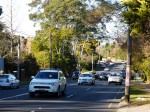 My first experience was the access from Beecroft Road onto the Pennant Hills Highway. Beecroft Road itself was pretty horrible, but it was the only realistic way out of where I was staying so I gritted my teeth and rode up it.
My first experience was the access from Beecroft Road onto the Pennant Hills Highway. Beecroft Road itself was pretty horrible, but it was the only realistic way out of where I was staying so I gritted my teeth and rode up it.
I was more encouraged when I got to my first junction because there was a warning sign for vehicles to look out for cyclists and then a cycle lane. Hopefully that meant better cycling on the other side because clearly this had been planned?
How innocent I was. Sydney readers will have got a clue from the photograph itself. This was a junction with Pennant Hills Road, one of the most unpleasant and unwelcoming roads in Sydney, six lanes of nose-to-tail commercial traffic.
Once I crossed that junction there was just nowhere to go except a six lane highway which was just horrible. I stayed only a few hundred metres before I took the first available turning off and reconsidered my options. I had no choice but to follow Pennant Hills Road for a short distance on a number of my rides and on each occasion I used the sidewalk (pavement) to get between junctions even though I was on a quality skinny-tyred road bike. I later spoke to quite a few people and was told that almost all cyclists used the pavement, including group rides from Beecroft.
So why anyone felt it was worth putting a cycle lane on any junction that joins Pennant Hills Road I have no idea, clearly what was needed was some realistic guidance and help to get across and away from this monstrosity, not an invitation to ride?
I also mentioned Mona Vale Road in my write up on three great rides in Sydney. As well as having to cross Pennant Hills Road this was my main access to the fantastic West Head Road in Ku-Ring-Gai Chase National Park. It is a bit different to the other examples because this was recommended to me as a “popular cycling road” because “you always see cyclists up there”.
It was actually the “no choice whatsoever” route because getting from Beecroft to the national park or the nearby bays and coast offers no alternatives for cyclists, cars or commercial vehicles. So of course we all go together. That’s sort of ok when there is a big wide safety lane on the left, although it’s not exactly enjoyable.
But when the lane just disappears, the only protection is a small sign and traffic is doing 100kmph past your elbow.
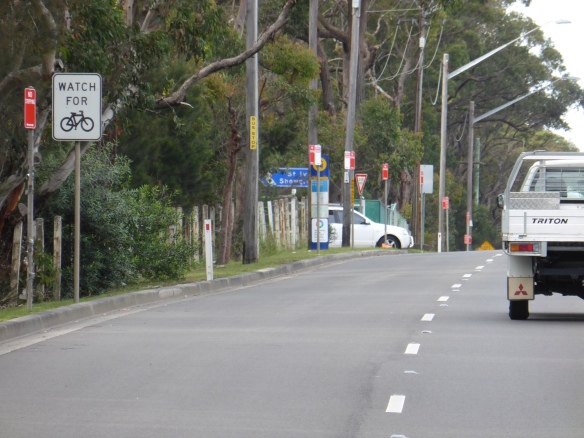
 I saw some cyclists and I slipstreamed one chap for a short while. He stopped just before I turned off and said “I turn back now”. I now realise that his choice of bike ride was to thrash up and down Mona Vale Road and he actually turned back just before the opportunity to ride an attractive, quiet car free route. I couldn’t do it, I would lose the will to live if that was one of my regular rides. The second time I cycled in this direction I got a lift to the start of my ride.
I saw some cyclists and I slipstreamed one chap for a short while. He stopped just before I turned off and said “I turn back now”. I now realise that his choice of bike ride was to thrash up and down Mona Vale Road and he actually turned back just before the opportunity to ride an attractive, quiet car free route. I couldn’t do it, I would lose the will to live if that was one of my regular rides. The second time I cycled in this direction I got a lift to the start of my ride.
My final example doesn’t have any photographs.
At around 6am on a Saturday morning we got our final lift from Beecroft to Sydney’s international airport. It was pitch dark and overcast, not a great day.
As we moved along the main dual carriageway towards the airport around 7am we pulled over to pass a slow moving vehicle driving with flashing lights. In front of it was a group of cyclists clearly out on a training ride. Just nearby was another group precariously stopped by the roadside, this time without support vehicle. I had heard that some racing cyclists in Australia go to extraordinary lengths to get some training before the roads get busy. Now I had seen them in action. Absolutely terrifying. Apparently 7 riders were hurt in a collision with a car on one of these rides recently. I hope last Saturday’s riders did have somewhere better to go, and that they got there and back safely.
So in the immortal words of Marvin Gaye “What’s goin’ on?”
I spoke to cyclists in Melbourne and Sydney including advocates and sports cyclists as well as leisure riders. Nobody at all said they used the roads where cycling is combined with high speed traffic. In particular the M2 Freeway attracted a “no way” response. I know elsewhere in Sydney and Melbourne they are gradually building high quality segregated cycle routes, even along the major highways. In particular the cycle route that follows Sydney’s M7 freeway gets rave reviews for being high quality, well designed and entirely protected from vehicles.
Interestingly most cyclists I spoke to in Sydney said they knew people who did use the unpleasant routes and there are even cycling advocates who regard the M2 Freeway cycle route as an essential part of their commute. This had once been a segregated parallel route to the motorway but the segregation had been lost during road widening and other changes leaving only the emergency access lane. Some cyclists fought to keep use of it because the motorway actually provides one of the only fast, direct and relatively flat routes into the centre of Sydney. The alternative is apparently much slower and in their eyes more dangerous, but is extraordinary to me that advocates will campaign for a facility that is usable by just a tiny rump of the cycling community.
I have to say a tiny minority because cycling is not a major means of transport in Australia. Mode share in Sydney reaches 3% in some suburbs but overall is just 1%. There is a bigger recreational community but it is still small compared to many European countries. But within this group majority of people who cycled that I spoke to were not going to use the high speed routes. So the number of major highway users must be very small indeed.
Every time I think about this I am drawn back to an excellent analysis of cycle users and potential cycle users that came originally from Portland in the US. It is now widely used because many people in the cycling world believe it is a very useful indicator of people’s attitudes to cycling on a much wider basis.
According the analysis about 1% of cyclists will cycle under almost any conditions. They include many sports cyclists but also include urban warriors who handle challenging traffic anywhere in the world. A further 5-6% are enthusiastic about cycling and have the confidence to tackle a lot of different riding conditions so they will cope with vehicular cycling but prefer some provision.
Then there are the vast bulk of the population who actually have a positive or at least passive view about cycling. They would ride if conditions are safe, but generally they have concerns that must be dealt with before they will ride.
Now in here in Melbourne and especially in Sydney I have found that the fearless cyclists group has at its head another even smaller minority. We have a comparison in mountain biking, they are the extreme downhillers, doing stuff even the brave decline. If they were a Tour de France mountain they would be “Hors category” – beyond measurement.
I am sure in Sydney some would argue “we have no choice” and from what I saw of suburban North Sydney I would have some sympathy with that view. After 10 days I could only conclude it was one of the most unwelcoming cycling environments I have ever experienced. However these cycle lanes made absolutely no difference to that impression, so I have no idea why they exist and even less understanding of my public authorities were convinced that these cycle lanes were worth spending money on.
I cannot help but feel that any effort to incorporate extreme cycling into the highway system undermines the possibility that cycling could ever be treated as “normal”. Surely it competes directly with the great efforts being made elsewhere to create high quality infrastructure that can be used by 60% of the population, not 0.01%. Ihope that all the work we did at Velo-city in Adelaide has encouraged and inspired the people who are making the new cycling facilities because they really are working against an extremist cycling heritage that will take a lot of unravelling before cycling can be an enjoyable activity for the majority of people.
But it can be done!


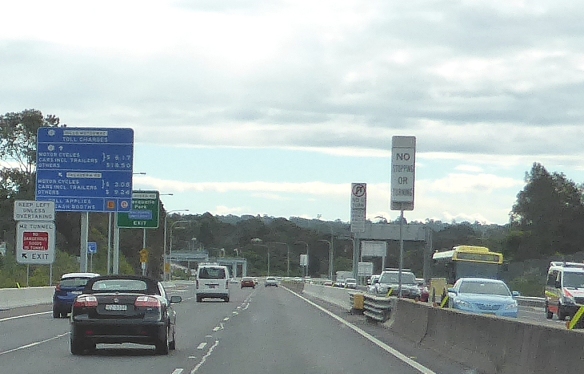
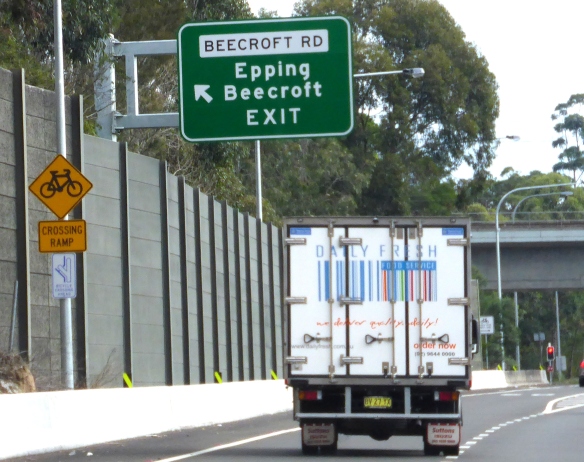
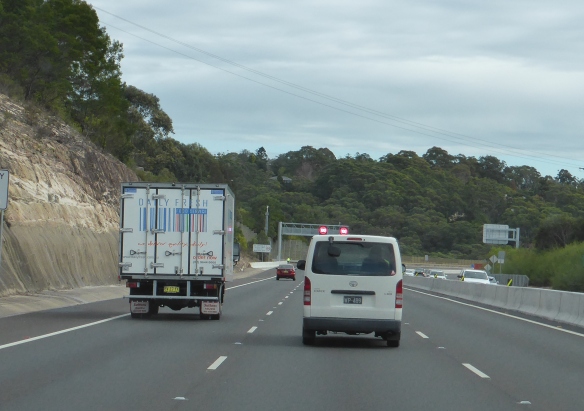



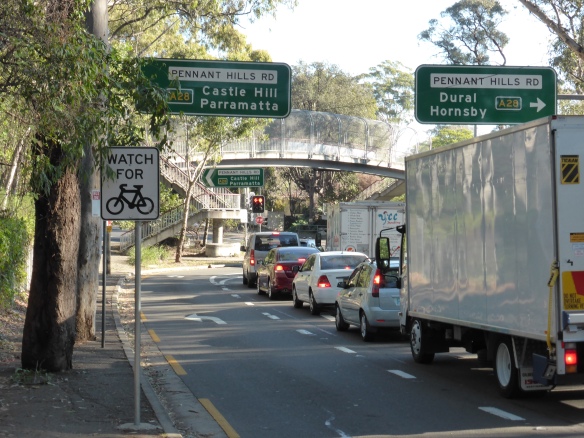


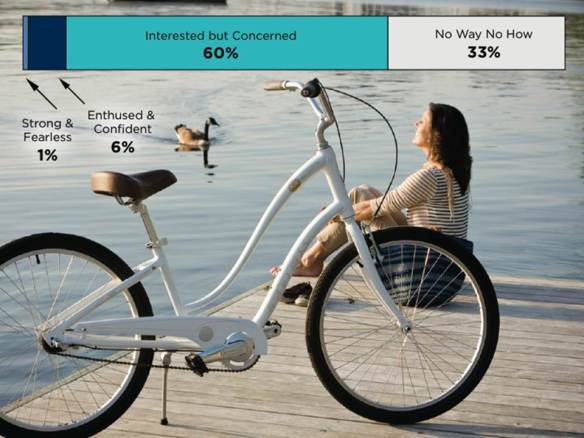

The mind boggles. One wonders whether this and the compulsory helmet law are part of the same package.
LikeLike
I think it is all part of a much wider problem about what cycling actually is in the eyes of many people in Australia.
LikeLike
I just read your comprehensive post. I agree that Australia has much in common with North America, both the good bits and the bad bits. If one day you make it out to Japan, I’d be very interested in your thoughts.
LikeLike
Crazy stuff. Looks like you have similar city planners as here in England. Paint lots of lines on existing roads and then talk about all the new cycle lanes which have been introduced under the current government! I remember being in Russia years ago and seeing 3 lanes painted on their highways and cars driving along 4 wide! Don’t always trust the lines on roads!!
LikeLike
Thanks for reading.
I have tried to cover the broader context in a follow up post http://wp.me/p24ZdP-134
I think this is all about failure to understand, not just failure to deliver quality.
Kevin
LikeLike